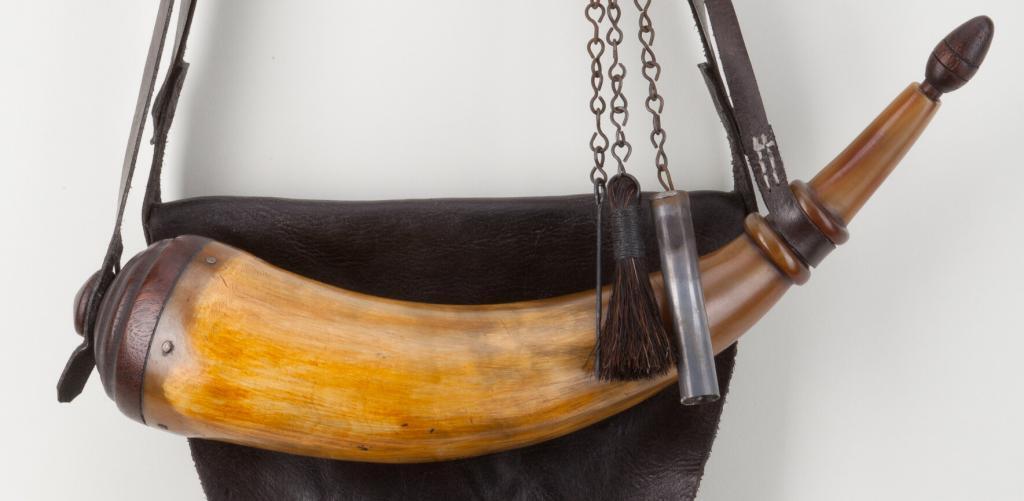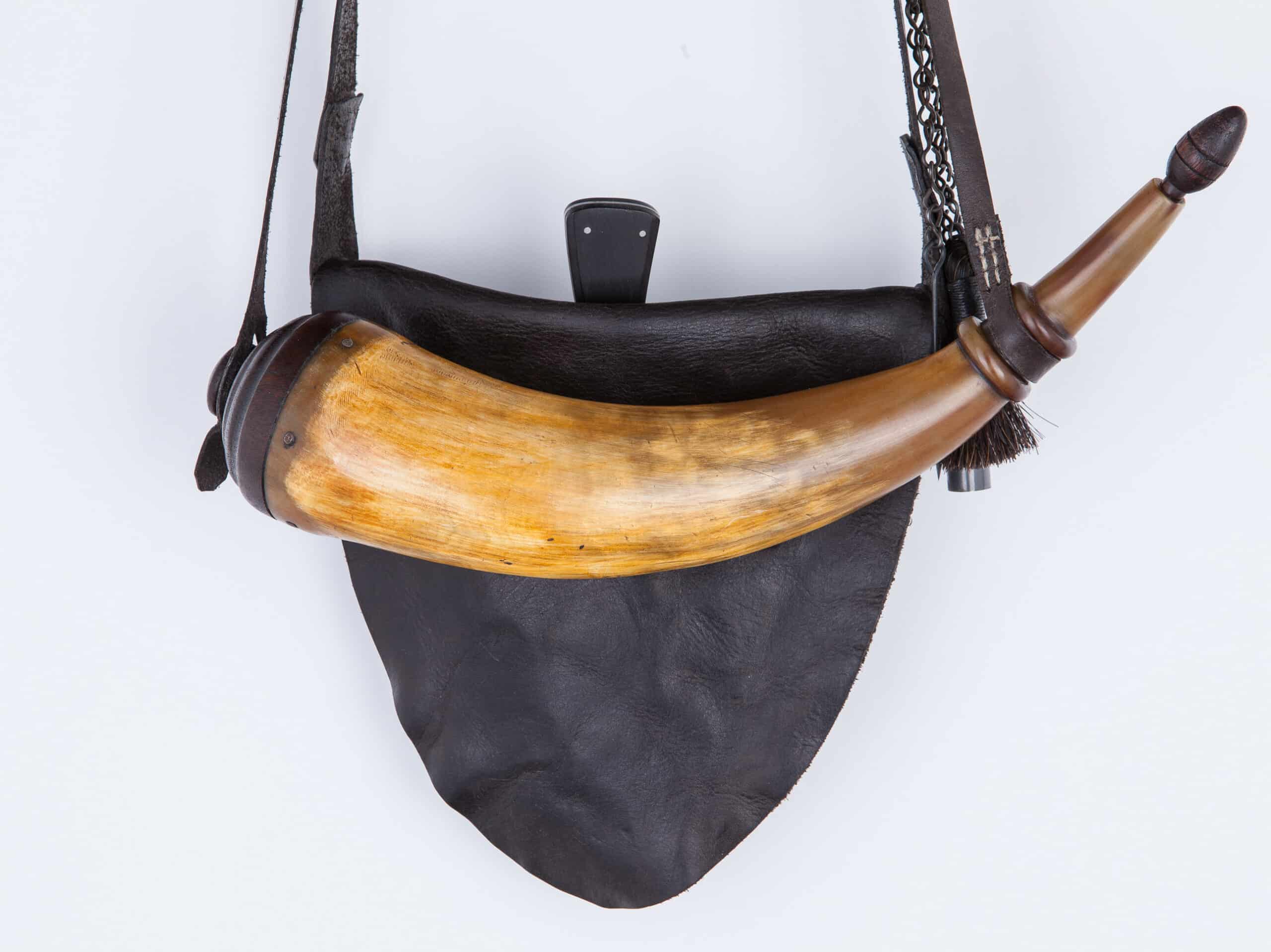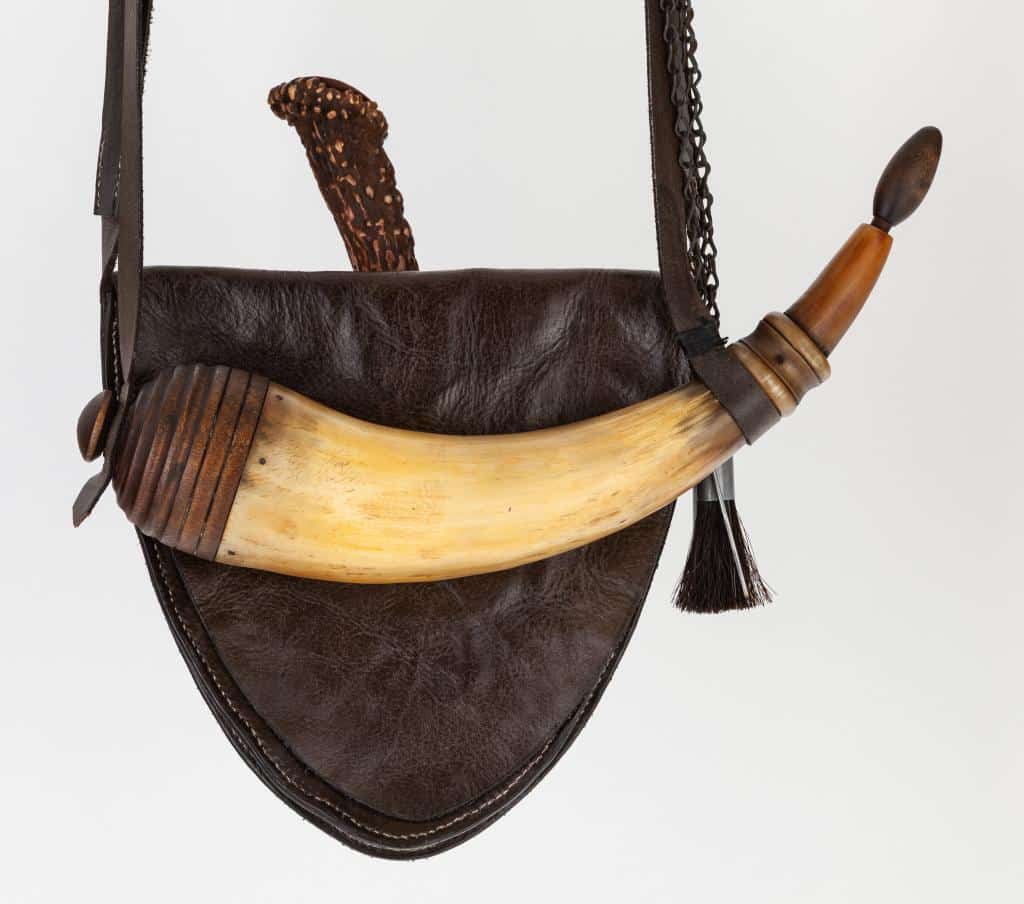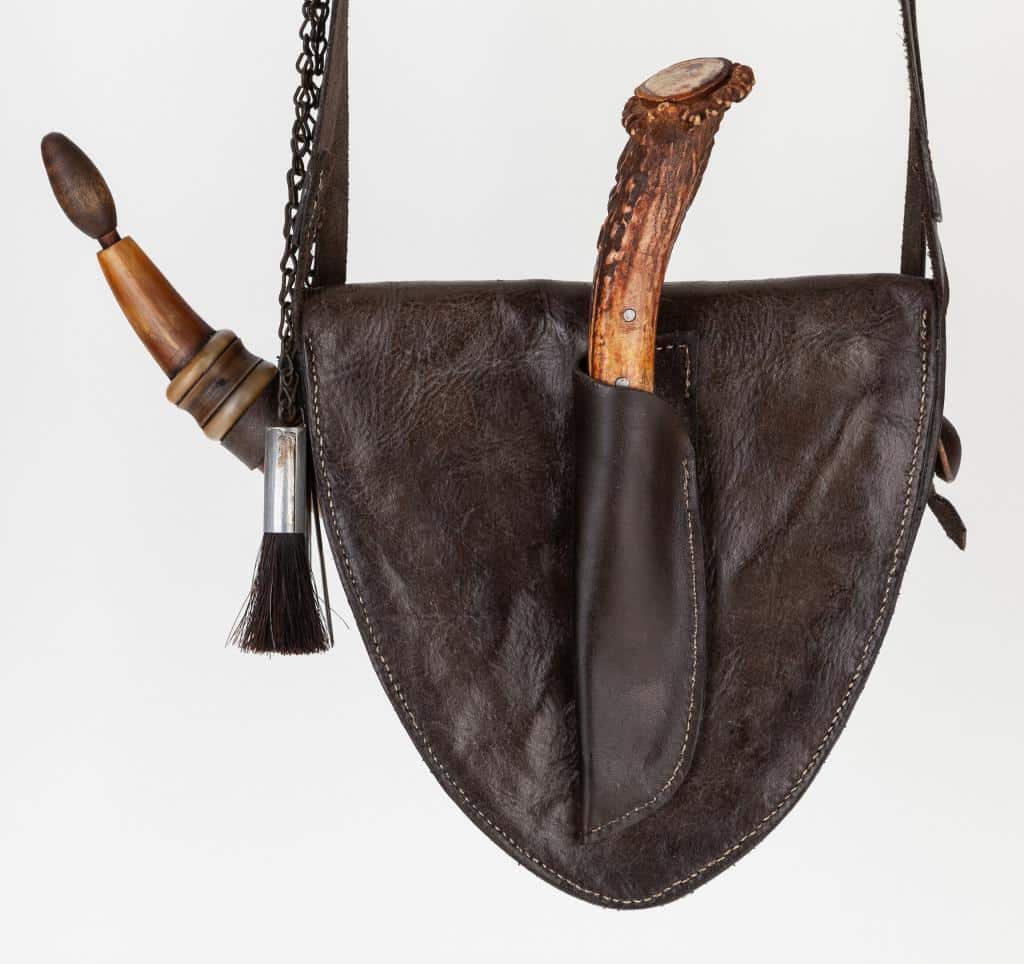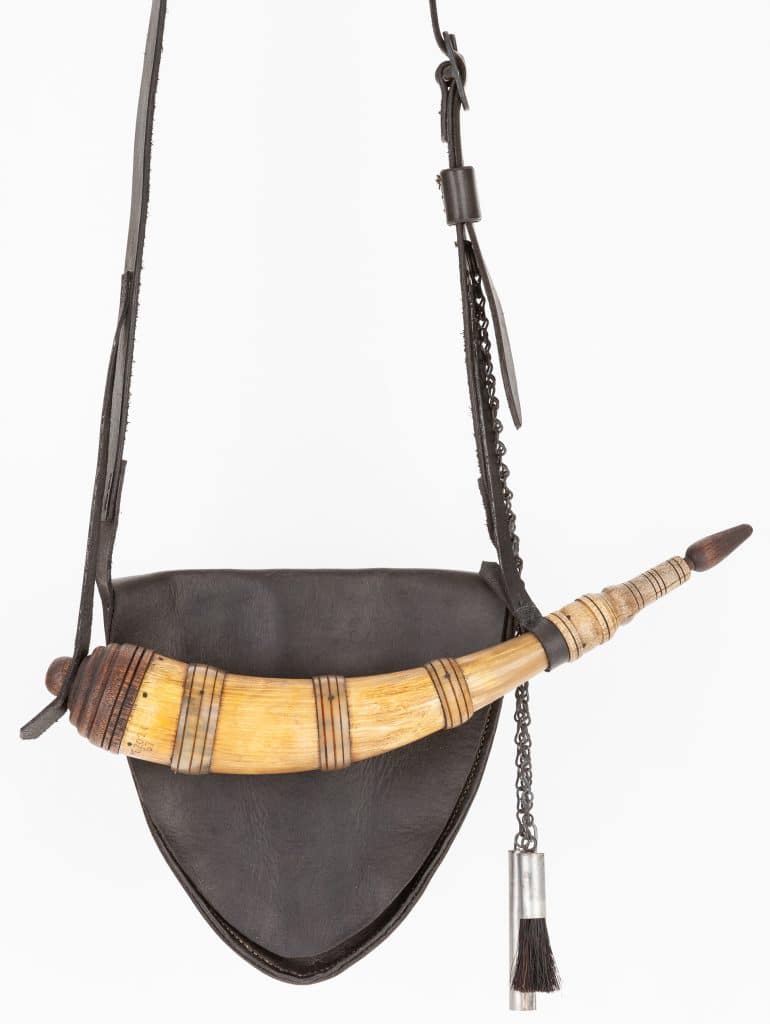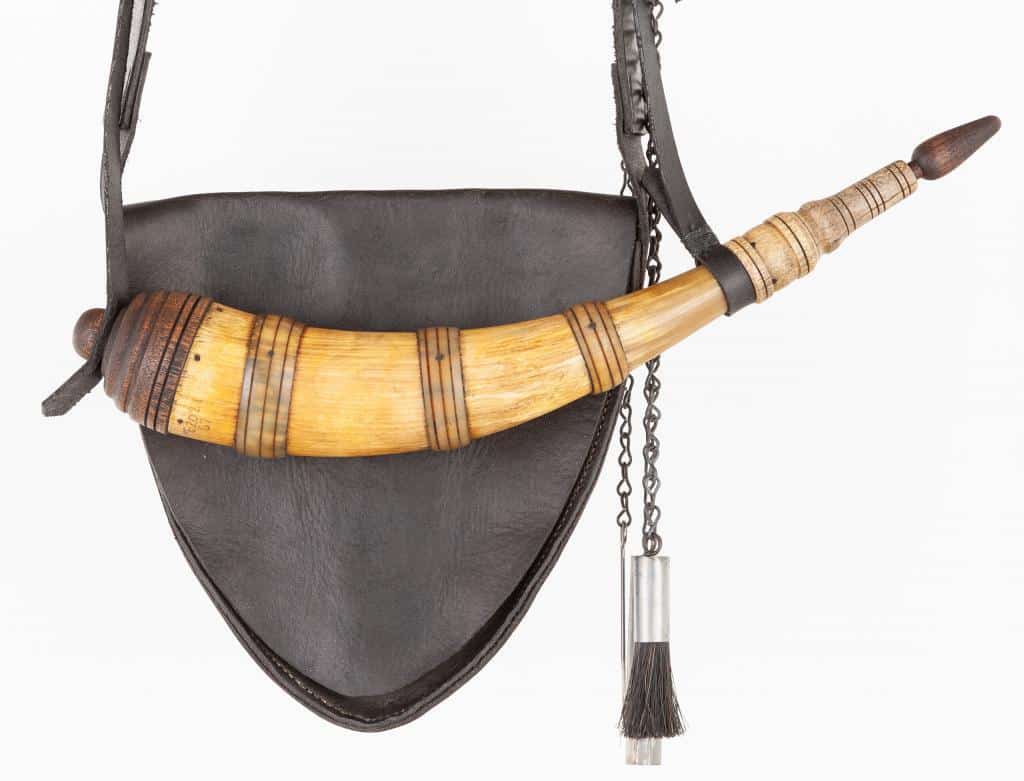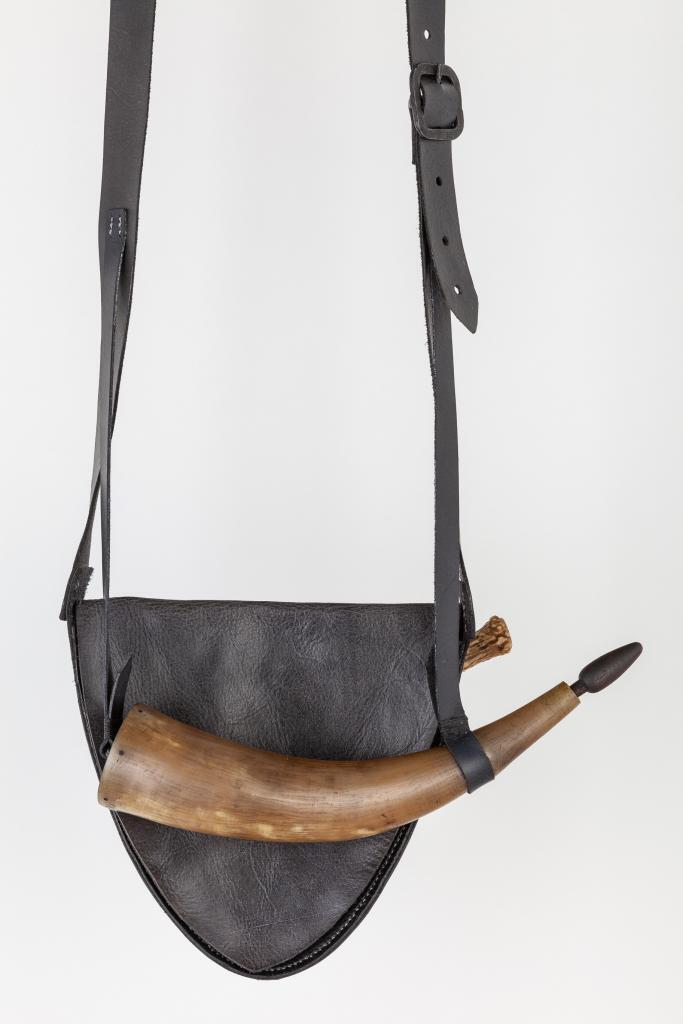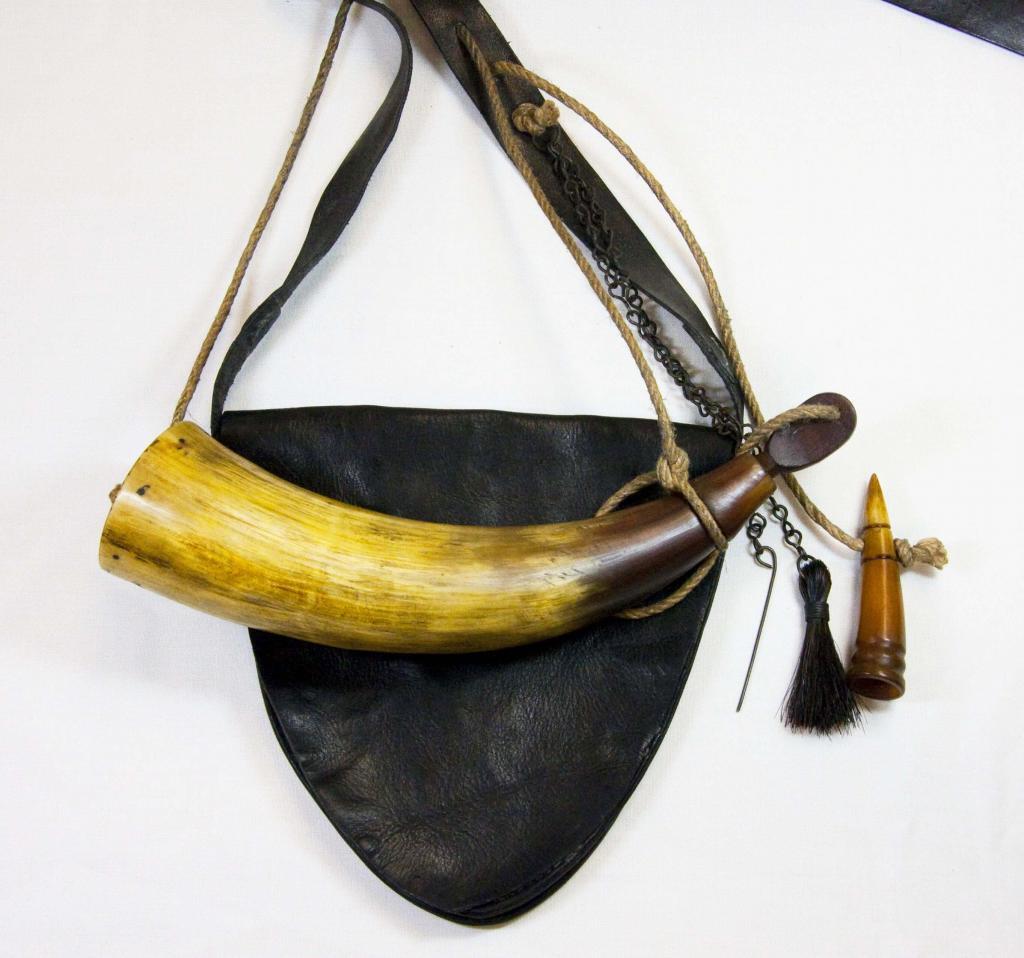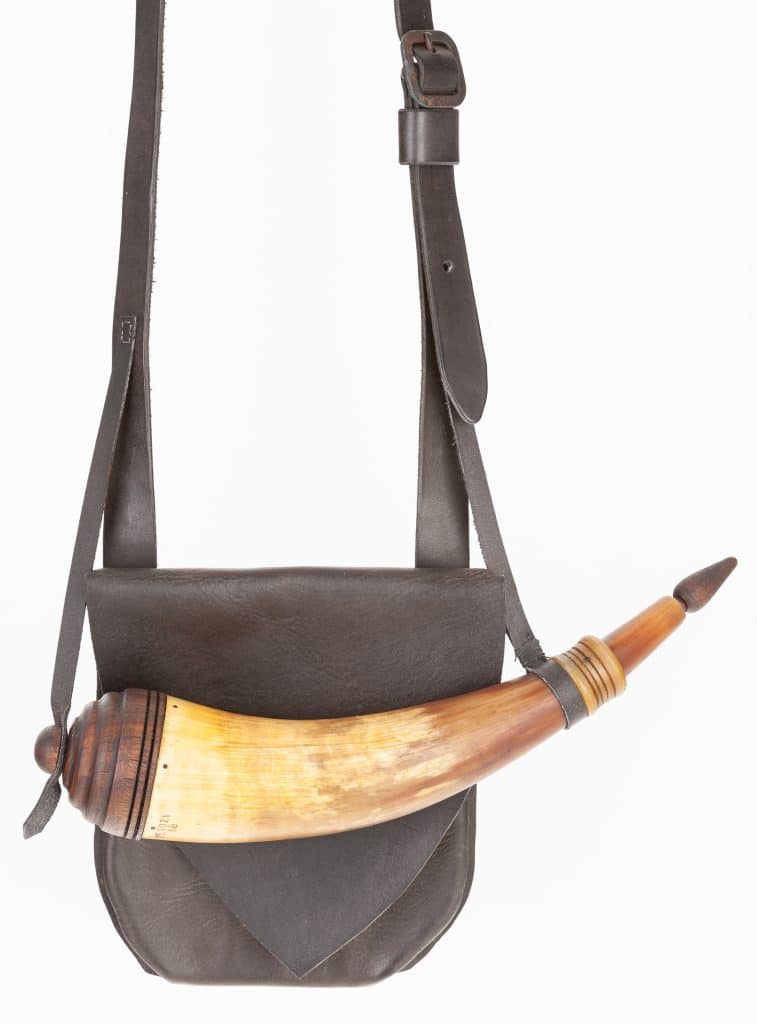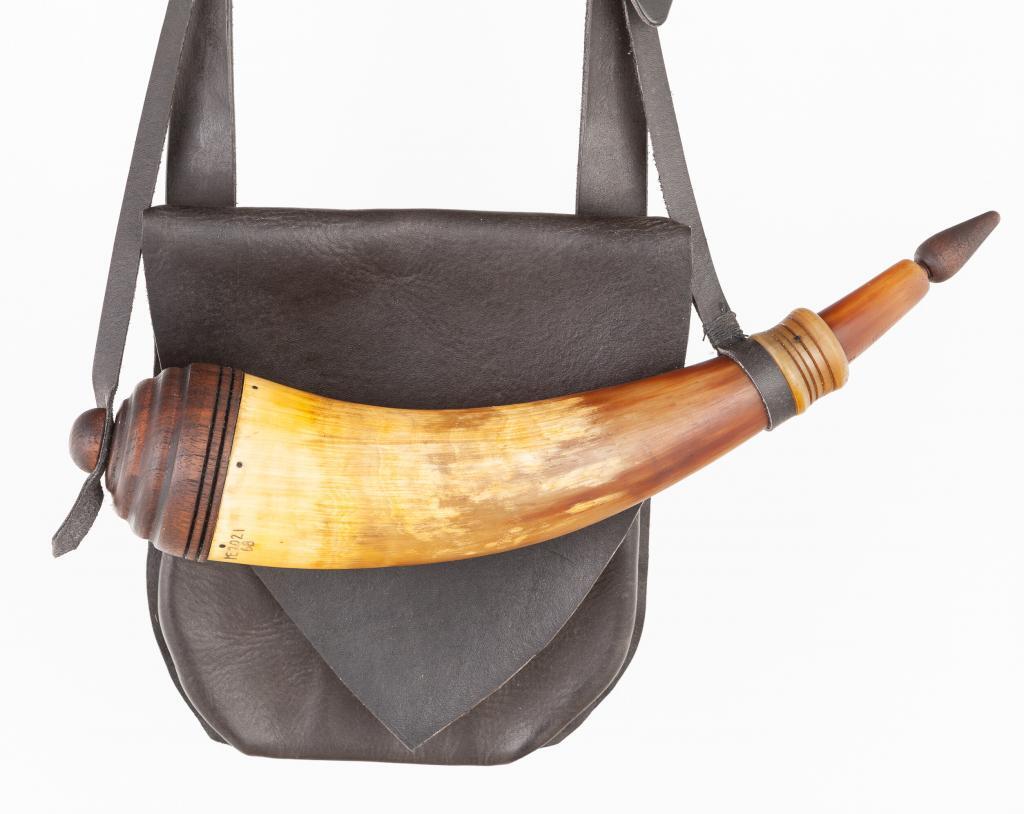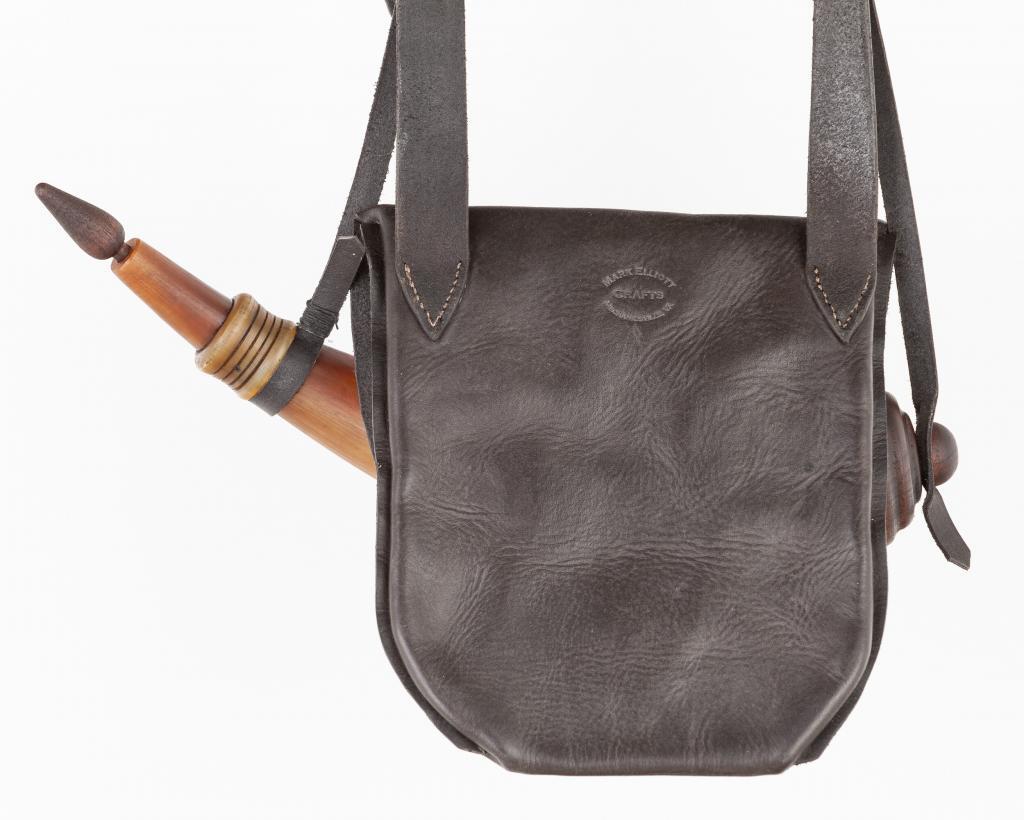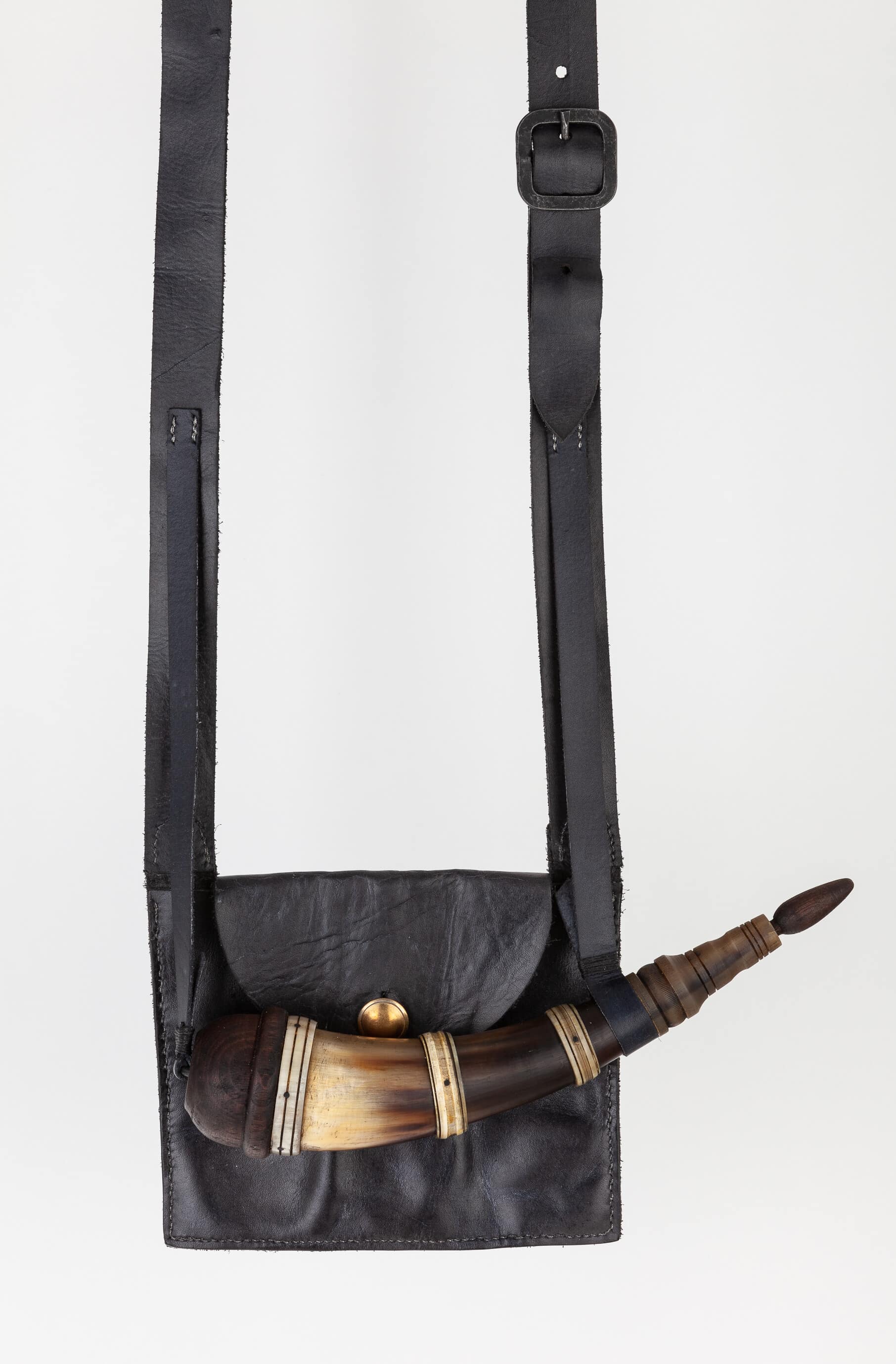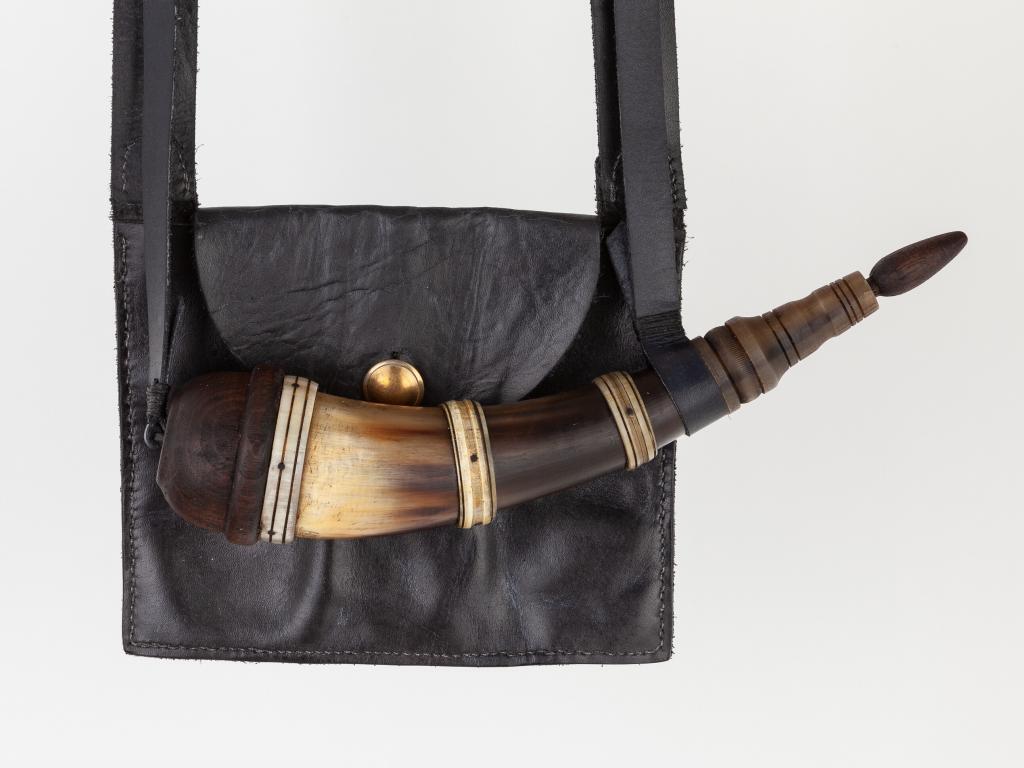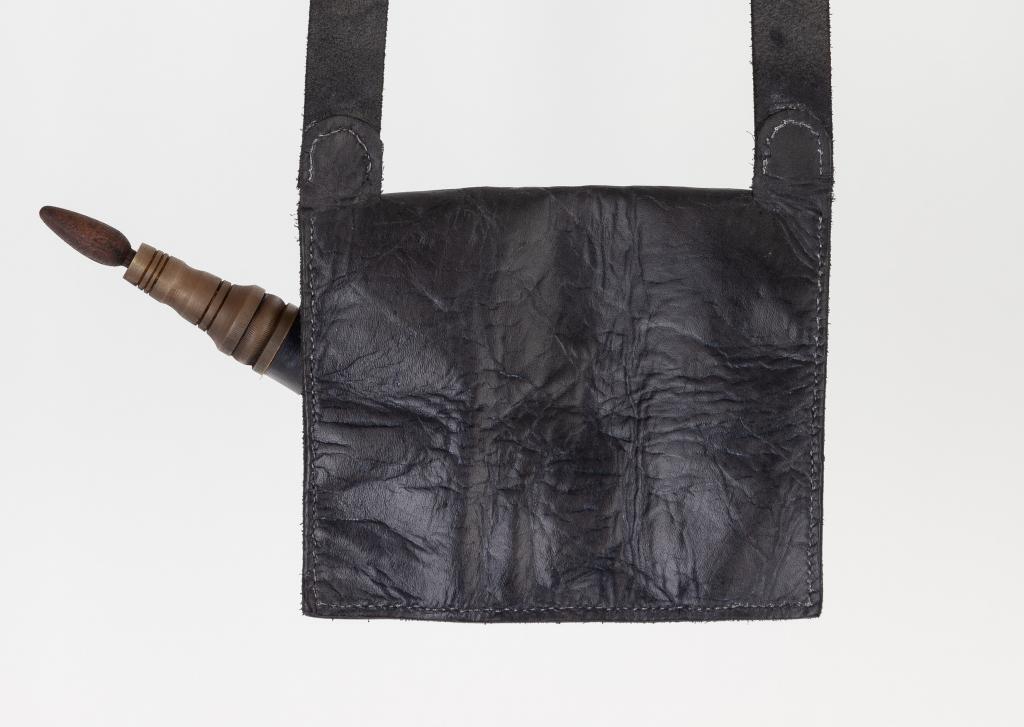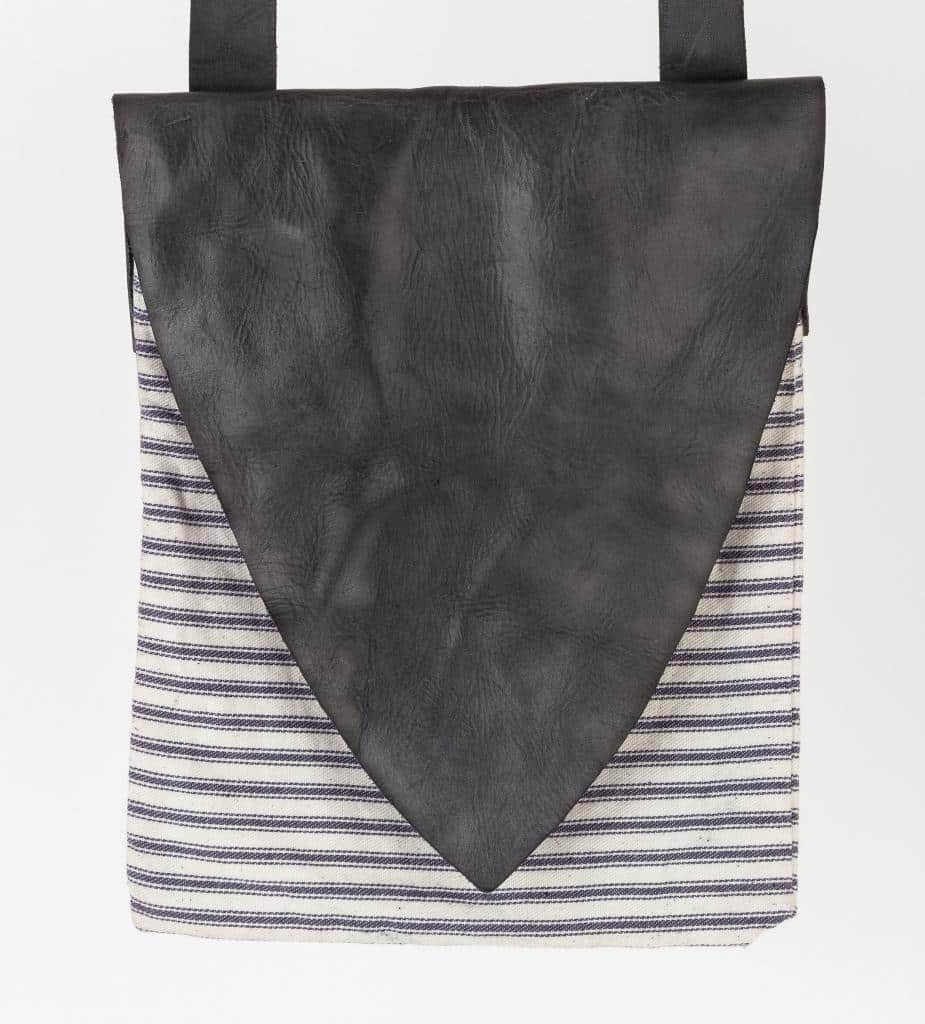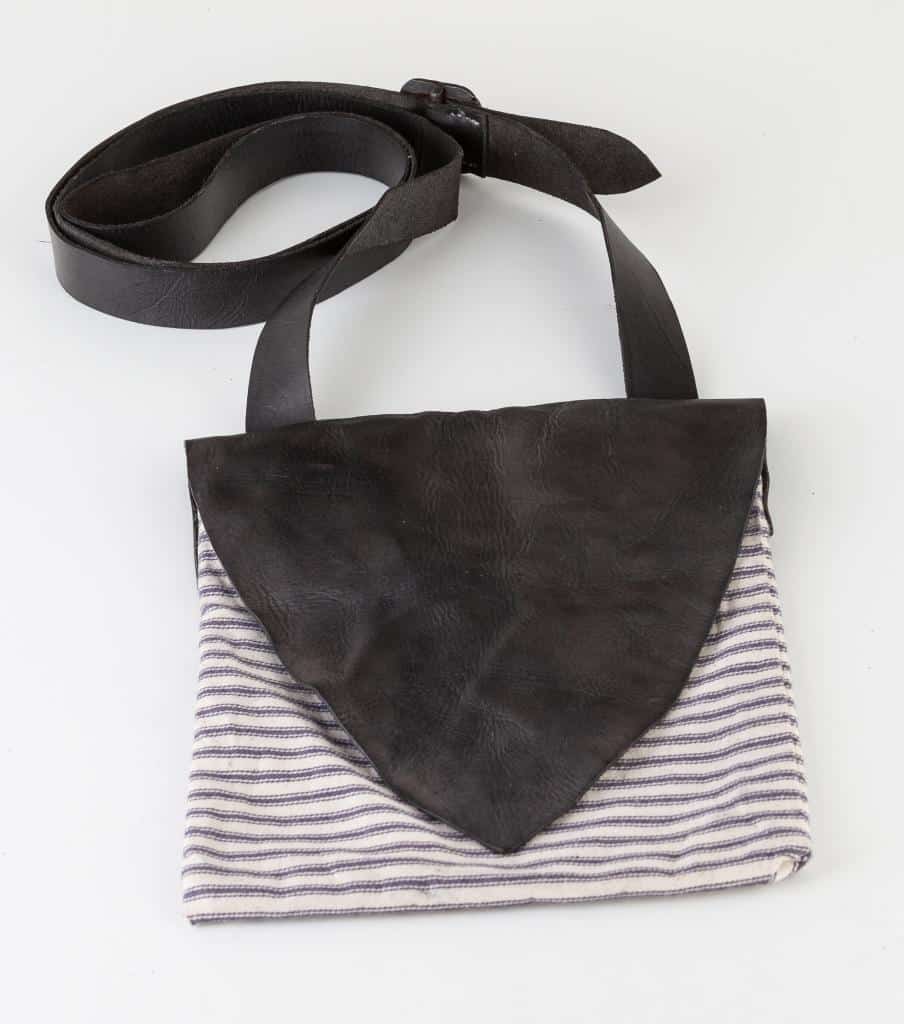Southern Heart Shaped Shot Pouch
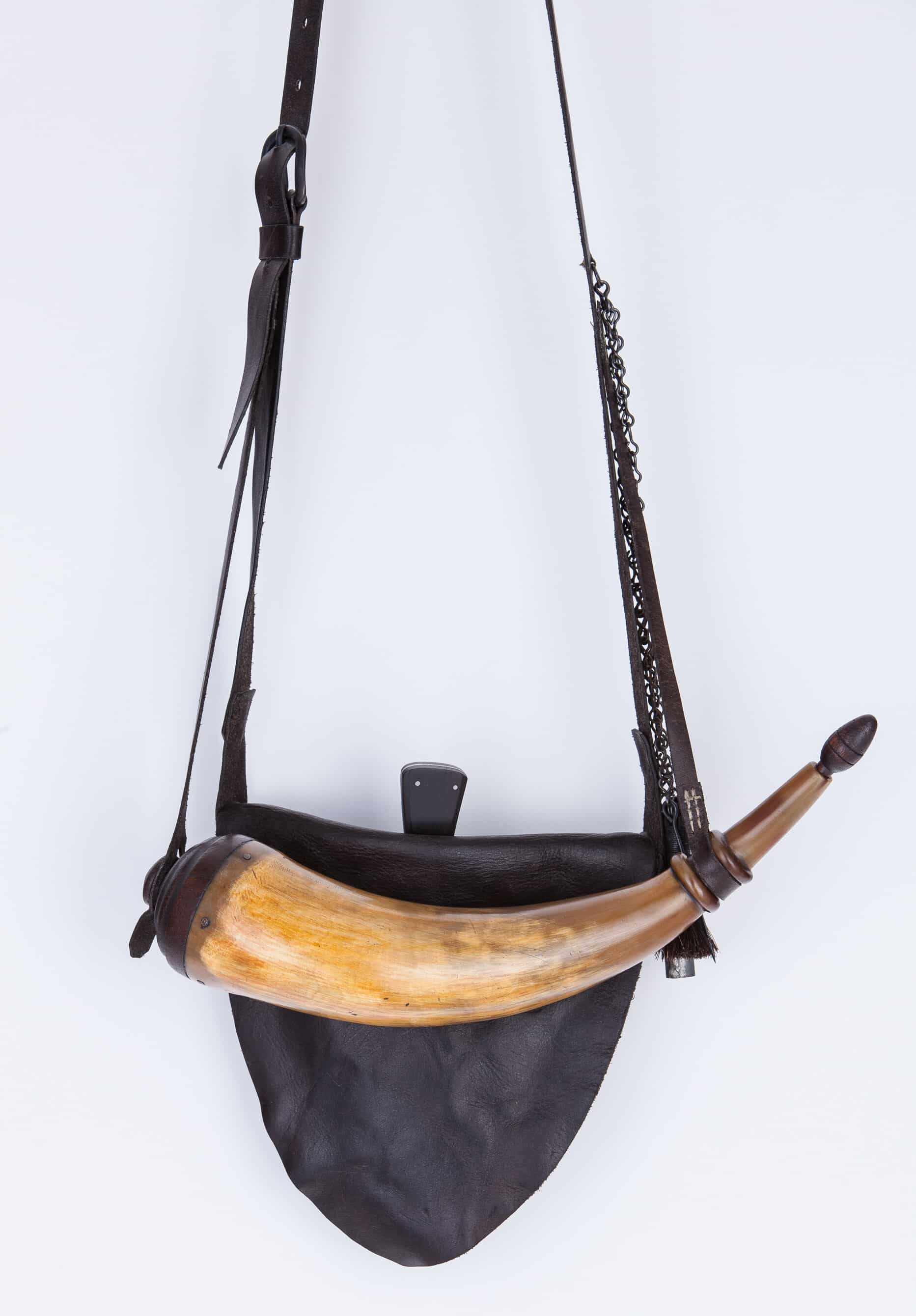
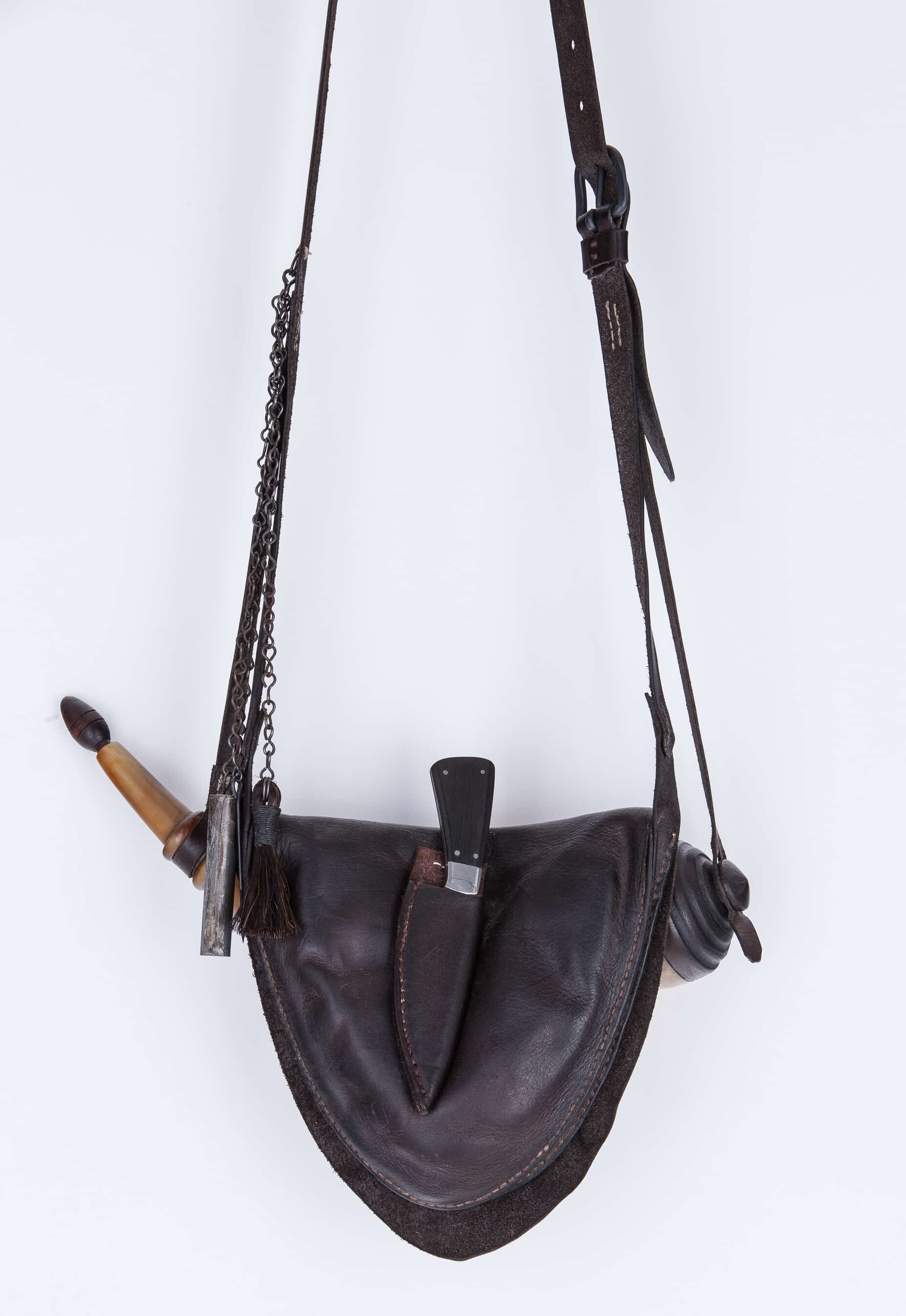
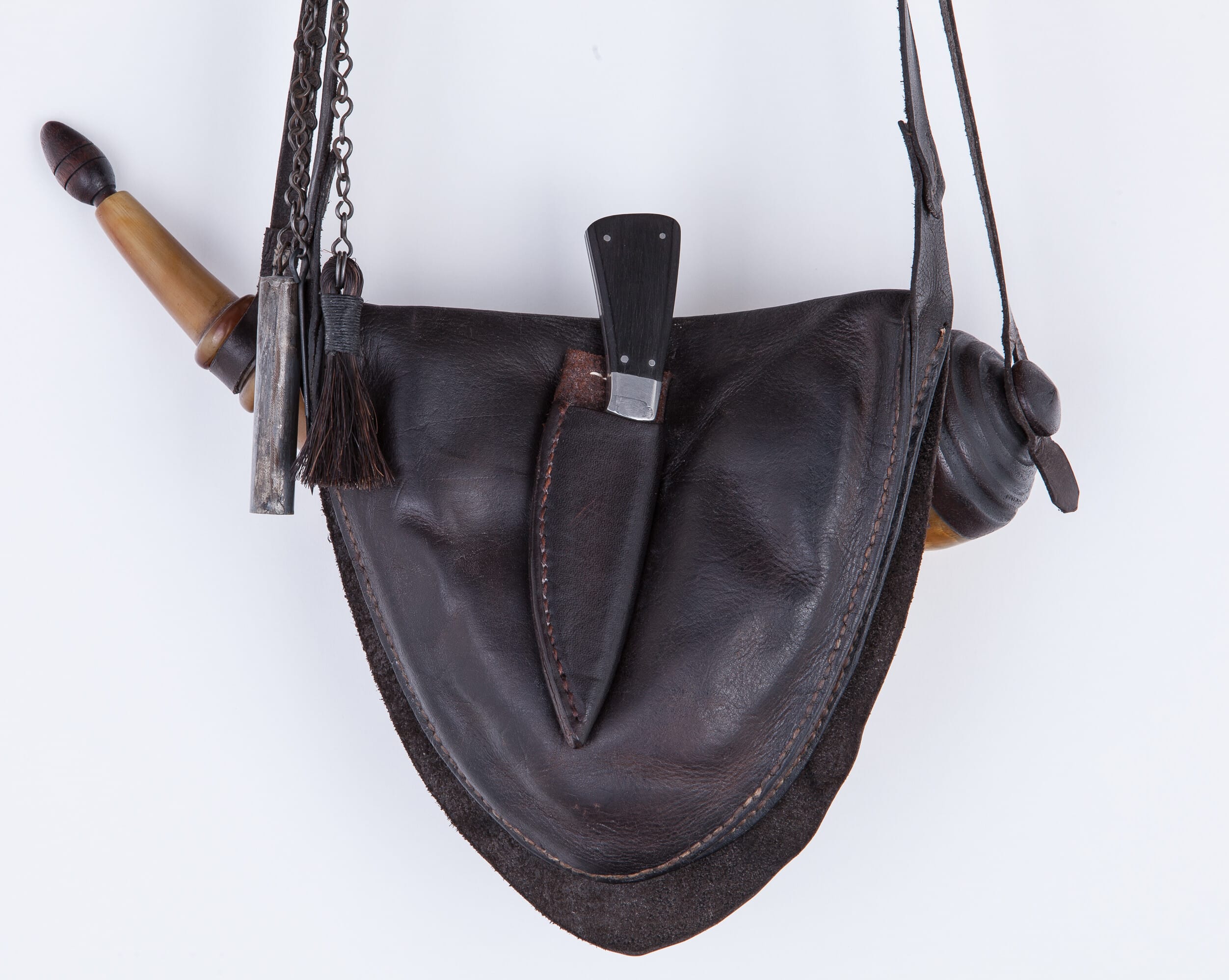
The attached powder horn is based on several original powder horns from Southwest Virginia. It is about 13″ around the outside curve with a 2 1/2″ base plug. This seemingly simple horn has carved integral rings and is as much work as a banded, applied-tip horn. It is hand filed and scraped with a turned walnut base plug attached using hand forged nails. A turned walnut stopper finishes the horn. The horn is dyed yellow with aquafortis and appropriately aged.
Below is an heart shaped pouch outfit that I made for myself with a slightly different horn. This horn has an turned applied collar instead of integral rings, and is based on the horn on pages 228-229 in Jay Hopkins book Bone Tipped and Banded Horns. It is about 12 1/2″ around the outside curve with a 2 1/4″ turned maple base plug. The stopper is also maple.
The heart shaped shot pouch (#56) below is paired with a small banded, applied-tip powder horn (#67). The horn is 13″ around the outside curve (not including the stopper), 11 3/4″ tip to tip, with a 1 15/16″ diameter cherry base plug that has been hollowed out about 3/4 of its length. The tip is two pieces consisting of both Axis and White Tail deer antler. The strap is about 51″ top of bag to top of bag which can be adjusted around 4″ either way with an iron buckle. It can, of course, be shortened. A measure set has been included with this outfit that can be calibrated to the customer’s specifications up to about 100gr.
Below are two heart shaped shot pouches with plain powder horns that are much more typical of what you would find in the southern mountains. The bottom outfit uses linen cord and chain to attach all the accouterments, much as it would have in the period.
Typical One Piece Shot Pouch
This is a very typical one piece rectangular shot pouch based on the one shown on pages 14-15 of Jim Webb’s book. It is just one piece of leather stitched up the sides with a welt and then turned inside out. I added the welt since the pouch was to be turned. The original did not have one. The pouch measures about 7″ wide by about 8″ high. The strap can generally be cut up to at least 60″ top of bag to top of bag.
The attached horn (#68) is very similar to Horn #24 shown above. It has a turned base plug and an turned, applied collar. It is about 13″ around the outside curve (not including the stopper), 11 1/2″ tip to tip, with an approximately 2 9/16″diameter black walnut base plug which is hollowed out about 3/4 of its length. The stopper is also black walnut. This is light horn that will hold a lot of powder.
The pouch body and strap are made from 3-4 oz (6 oz strap) vegetable tanned cowhide. An iron buckle is used to provide about 4″ of adjustment either way. The strap is about 53″ top of bag to top of bag and can, of course, be shortened. The leather is stained with vinegar and iron and finished with mink oil for a dark brown color.
Small Two Piece Shot Pouch
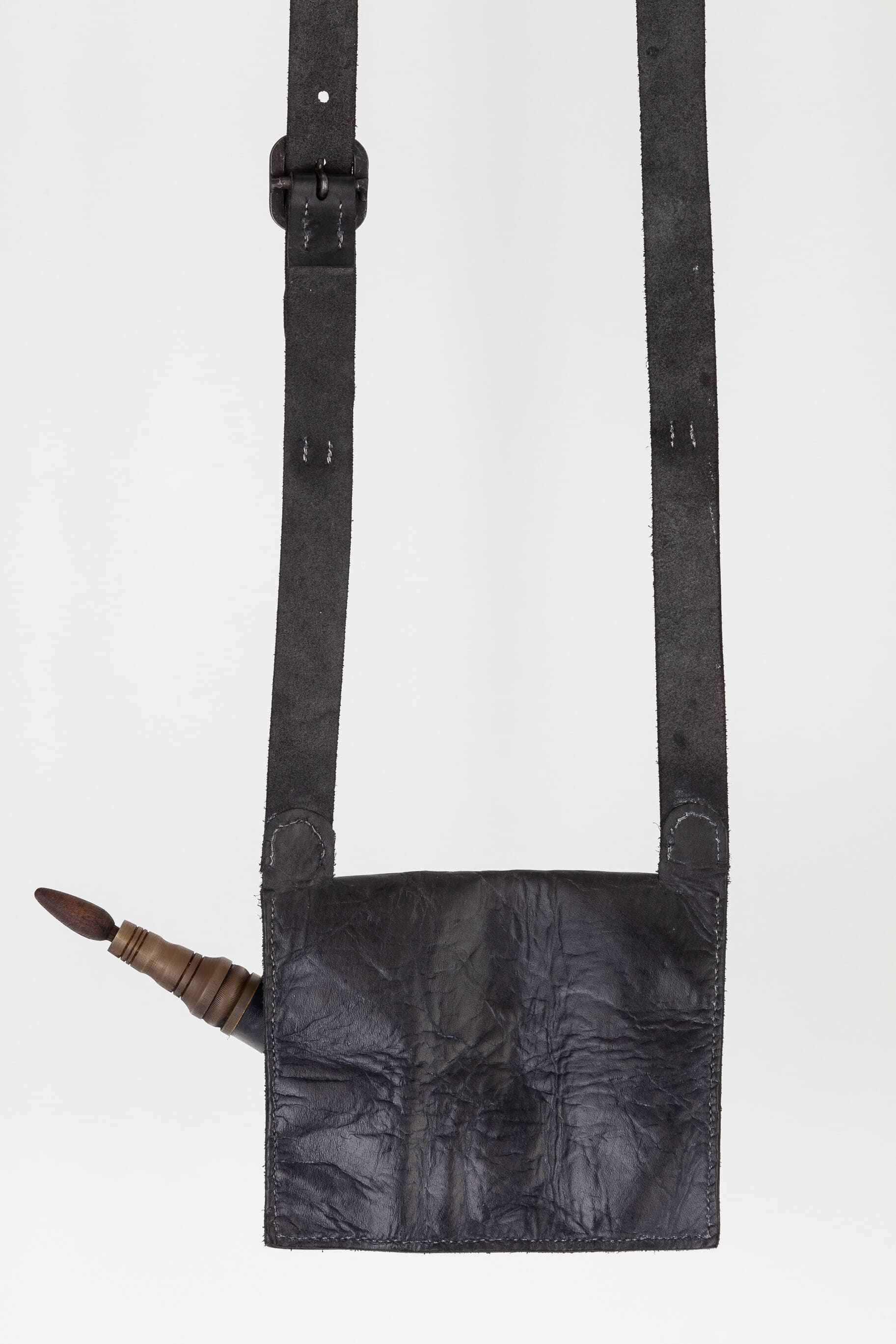
The horn is about 10 1/2″ around the outside curve (staple to stopper) with a base plug about 2 1/8″ in diameter. It is straight so it can be correct as either a left or right hand carry, and has been setup as a right hand carry. I figure it might hold 10 shots worth of powder for a small caliber rifle.
The pouch body and strap are made from 3-4 oz (new pouches have 6 oz straps) vegetable tanned cowhide. An iron buckle is used for strap adjustment. The strap can generally be cut up to at least 60″ top of bag to top of bag. The leather is stained with vinegar and iron for a blue-black color and finished with mink oil and black shoe polish.
Cloth and Leather Pouch
Shown here is a very practical pouch made from pillow ticking and a bit of leather for the flap. The bag is approximately 8″x 10″ and fully lined in that there are no raw edges showing on the inside. I could also make it 12″x 14″ to be a haversack which is shown below. White canvas is also an option with a pillow ticking lining. A leather reinforcement has been placed on the inside of the bag and stitched to the flap. The leather strap is stitched to the flap and internal reinforcement and is adjusted by an iron buckle.
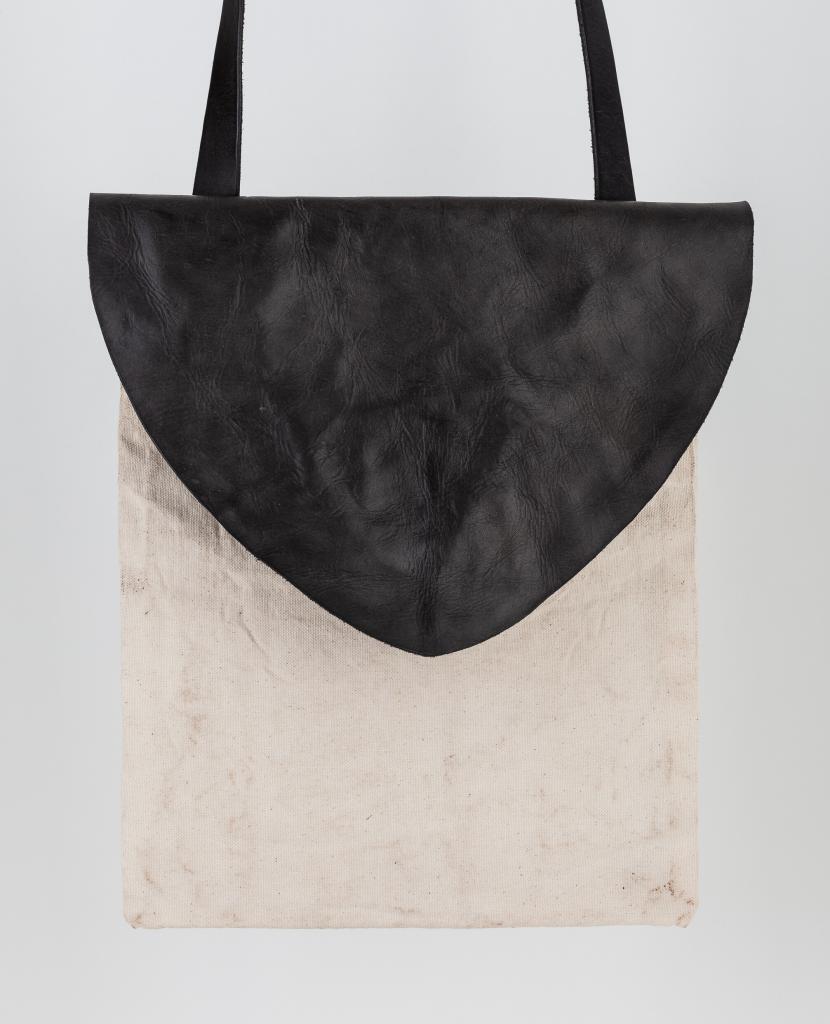
Right or Left Hand Carry?
What is right or left hand carry? Simply, it is the side of the body on which a horn is intended to be worn. Historically, a curve of the tip to the left as viewed from the top is a right hand carry horn and also from the right side of the cow. A curve of the tip to the right would historically be a left hand carry horn and from the left side of the cow. If there is no significant curve of the horn as viewed from the top, then the horn can be easily worn on either side with no conflict. Most horns have so little curve it really doesn’t matter much and the modern pattern of carry is frequently opposite of the historical pattern.
Carrying a horn on the same side of the body as it came from the cow results in the tip pointing toward the body and the base pointing away from the body. I also like the base of the horn to point toward the body, as do many modern wearers, so I usually use the opposite side horn and rotate it about 90 degrees so that both the tip and the base of the horn point into the body. This makes a horn from the left side of the cow into a powder horn you can carry on the right side of the body. This is my personal preference, but not generally historically correct. Historically, powder horns were usually carried on the same side of the body as they came from on the cow. If you want to be completely historically correct, you need to understand that.
Sometimes a horn that is technically a left hand horn might wrap around the body better on the right hand side and vice versa. So, in describing a horn, I will tell you whether a horn is historically a left hand or a right hand. Then I will tell you on which side the horn was built to be carried, if it is different. I will also try to include a photo from the top of the horn so you can see the curve for yourself. On which side you actually carry a horn, that is up to you.
